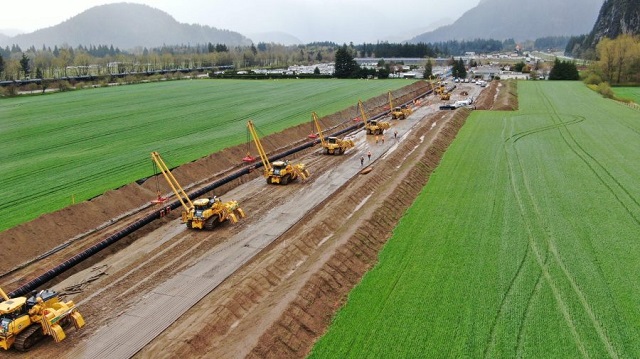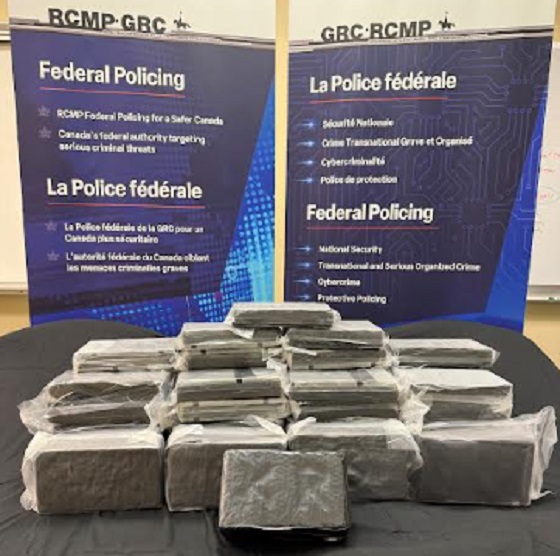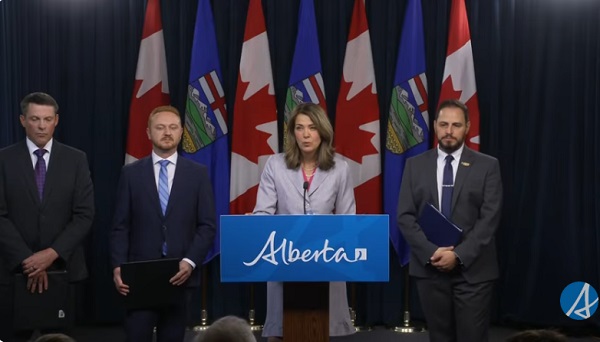Travel
Todayville Travel: The Long Road to Texas

Todayville Travel brings you this excellent travel adventure from writer Gerry Feehan simply entitled The Long Road to Texas.
by Gerry Feehan
You would not want to go on an RV trip with me. Plans are inevitably last minute and unpredictable. An innocuous road sign may result in a quick U-turn – and a two-day detour to places unknown.
In early fall we packed our modest motor home and slowly, circuitously ambled from Red Deer southward toward Texas. While impatient snowbirds zoomed by on the interstate en route to a quick, warm Arizona fix, we meandered the back roads, stopping to smell fall’s decaying flowers.

The road to Texas began circuitously, with a detour through Invermere, BC
Our destination was the Texas Gulf but we ultimately took more time getting there than we spent in the Lone Star state.

There’s always time for fishing!
We had no reservations, just a vague malleable plan that, malleably, seemed to change every day. An open travel agenda often leads to pleasant surprises, particularly if one foregoes the freeway for those tranquil country roads. In every backwater town knowledgeable locals are anxious to share wisdom about local pearls. Preconceived plans may go into the rubbish bin but… c’est la vie.
That’s how we stumbled upon Great Sand Dunes National Park. As usual, we had eyed the map one morning, fired up the RV and started to wander. We were lost, headed down the Arkansas River in south Colorado. It was late afternoon. I pulled over and asked directions from a local lady walking her dog.
“Excuse me,” I enquired apologetically of the woman curbing her canine. “I’m a little displaced. Do you know of any campgrounds near here?”
She looked at me, astounded. “Don’t you know that one of America’s great treasures is right there?” She pointed toward a distant, sandy pile fronting the Sangre de Cristo Mountains: Great Sand Dunes National Park.

Great Sand Dunes National Park

We rolled in just as lengthening shadows crept over the vast dunes in a remarkable, rippling display. We set up camp as a bloodshot sun set on the Sahara-like landscape. Coyotes howling at the moon lullabied us to sleep.
In the morning I stepped out into the crisp mountain air. The sand was now shadowed from the east.
We enjoyed our cup of morning joe as dark images, reversed from the night before, played across the dunes. After breakfast we huffed and puffed a thousand feet to the summit of the sand; then ran, child-like, down to the flat plain.
At the visitor center I told a Park Ranger that we were headed toward Texas and asked if there were any other such magical places along the way.
Have you ever been to Palo Duro Canyon State Park?” she asked, pointing to a map of Texas. Palo Duro was directly in our path to the Gulf. Perfect. That afternoon we descended from a Colorado Rocky Mountain high to the bleak, flat scrubland of west Texas. We stopped for the night at “Happy Plains” RV Park in the sleepy town of Texline. We were the only guests. The proprietress, a lonely retired schoolteacher, was happy to shoot the breeze during check-in:
“You’re from Canada? Well, welcome to Texas. My late husband and I drove through Canada once on our way to Alaska. Very friendly people. What’s the name of that National Park? Barff? Great food there, not too spicy.”
I averted my eyes. Florence yawned in an effort to speed up the check-in process. The old gal continued undeterred:
“But Canada was just a little too clean for me. I’ve never been happier than when we finally got to Alaska and saw all the cars jacked up on blocks. Made me feel I was home again. Don’t get me wrong,” she continued, “there is no reason for you to feel ashamed. In fact I believe there is no reason why we wouldn’t welcome you to join us and make one big country.”
“Good idea,” I responded. “We could call it Canada.”
She looked at me quizzically. It hadn’t occurred to her that Canadians might actually cherish their northern independence, that we might like our clean, polite wasteland and that we enjoyed our bland dishes, even if they were served up in “Barff”.
In the morning we hastily broke camp and tried to sneak out the Happy Plains gate. But there stood the lonely matron, blocking our escape route, a basket in hand. She handed me a fistful of chocolate bars. It was Halloween.

Pronghorns near Texline eye the road warily
“I’m sorry about that nonsense last night,” she said, “sometimes I say silly things. ”Don’t we all, sister.
Late that evening we descended into Palo Duro – the “Grand Canyon” of Texas – near Amarillo. Palo Duro is famous for its spectacular red-rock vistas and endless hiking and biking trails. As usual we arrived without reservation. It was a busy weekend. The ranger greeting us was a mountain of a man. His nametag said simply: “Moose”.
“Geez your lucky,” he said. “We’re full up but just had a late cancellation for one of the finest spots in the park.” I shrugged happily. As I affixed the park pass to the windshield, Moose remarked: “Sometimes it pays to travel by the seat of your pants, last minute like.”
Yup, it does.

Palo Dur0- The Grand Canyon of Texas

Travel during the shoulder season means you have entire vistas to yourself – and great weather!
Gerry Feehan QC practised law in Red Deer for 27 years before starting his second life as a freelance travel writer and photographer. He says that, while being a lawyer is more remunerative than travel writing, it isn’t nearly as much fun. When not on the road, Gerry and his wife Florence live in Red Deer and Kimberley, BC. Todayville is proud to work with Gerry to re-publish some of his most compelling stories from his vast catalogue developed over more than a decade of travel.

Business
Looming Air Canada strike highlights need for more competition in the air
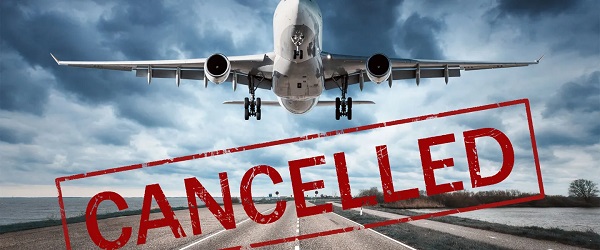
From the Fraser Institute
By Alex Whalen and Jake Fuss
Air travelers in Canada are facing a major disruption as Air Canada’s flight attendants threaten strike action. Air Canada says the strike could affect 130,000 passengers per day from coast to coast.
Currently, two airlines control between roughly half and three quarters of all air travel at Canada’s major airports. When either Air Canada or WestJet face a disruption, a large share of Canada’s overall air traffic is affected. In recent polls, a majority of Canadians have said they feel like Canada’s system of air travel is “broken”. Passengers experiencing hardship should cheer for more competition in Canada’s airline industry.
Increased competition has multiple benefits. When one airline inevitably faces a disruption, passengers would have more options to book with other carriers. Competition also tends to lead to lower prices and better service across the board for the customer, as power shifts away from the supplier and toward the consumer.
Unfortunately, Canada’s skies are largely sealed off from competition.
Due to restrictive federal rules known as “cabotage”, foreign airlines may fly to Canadian airports, but they cannot operate routes exclusively within Canada. For example, a foreign airline such as Delta can fly from New York to Toronto, but cannot then fly from Toronto to Montreal. This policy limits choice and competition within Canada.
In contrast, the European Union removed cabotage restrictions for member-states in the 1990s. The result? More competition (including from new low-cost carriers such as Ryanair), a 34 per cent decline in ticket prices (adjusted for inflation), more cross-border routes, and greater flight frequencies. The entry of new low-cost carriers alone helped lower airfares by 20 per cent.
But new entrants into the industry, including low-cost carriers, face significant barriers to entry in Canada, with foreign ownership restrictions compounding Canada’s competition problem. Currently, the Canada Transportation Act caps foreign ownership of Canadian airlines at 49 percent, and no individual foreign investor can own more than 25 percent of the voting shares.
Starting a new airline is obviously a big undertaking, in part because of the large amounts of capital required to acquire a fleet of airplanes. These rules limit the ability of new entrants to raise the necessary investment capital to compete in the Canadian market.
Loosening these restrictions was recently recommended by Canada’s Competition Bureau, which had been tasked with studying the dismal state of competition in Canada’s airline sector. Earlier this year, we authored a study published by the Fraser Institute which reviewed international best practices in airline policy. Based on this review, we recommended Canada remove foreign ownership restrictions, among numerous other recommendations where Canada is offside with peer countries, including the need for lower taxes and fees, changes to Canada’s airport ownership structure, and a more competitive regulatory burden.
The looming Air Canada strike is just the latest in a long list of regular disruptions faced by Canadian air travelers. While such disruptions may never be fully eliminated, government policy is making the situation worse than it needs to be. Cabotage and foreign ownership restrictions should be removed to provide consumers greater choice when it comes to air travel.
Business
Competition Bureau recommends bureaucratic power grab over airline industry

From the Fraser Institute
By Matthew Lau
According to the Competition Bureau’s recent market study of Canada’s airline sector, “Competition delivers major benefits to Canadian travellers. Beyond lower prices, competition drives quality improvements and innovation.” This statement about economic competition is correct. Unfortunately, however, some of the Bureau’s other ideas about economic competition are fundamentally wrong and its poor proposals, which would damage the airline industry, are mixed in with beneficial proposals.
Let’s begin with what the Competition Bureau, a law enforcement agency that reports to the federal government, gets right. Three of the 10 recommendations in the Bureau’s market study relate to opening Canada’s airline sector to international competition. Allowing more international competition is an commonly proposed idea (including in a Fraser Institute study earlier this year) and a good one.
Specifically, the Bureau recommends raising the single-investor foreign ownership limit for Canadian airlines to 49 per cent, allowing 100 per cent foreign ownership for domestic-only Canadian airlines, and working with other countries to remove foreign competition restrictions. The Bureau also recommends reducing regulatory costs for northern operators to support northern and remote market access, and opening government contracts to as many bidders as possible to get better value for taxpayer dollars.
Alas, despite these good ideas for protecting or improving competition, the recommendation at the top of the Competition Bureau’s list is negative, founded on a poor understanding of economic competition, and places far too much faith in the power of government intervention to preserve or improve competition.
“We recommend adopting a system of parallel reviews,” reads the study. “Under this system, both the Commissioner of Competition and the Minister of Transport would conduct independent reviews. Either process could block a transaction, and deals could only proceed if they cleared both reviews.”
In other words, the Competition Bureau proposes the Commission of Competition (the head of the Bureau) have veto power over airline mergers and acquisitions. The stated intention is to disallow anti-competitive mergers or collaborations, but this appears to be a bureaucratic power grab that would block transactions that benefit airline passengers and likely reduce investment in the airline sector.
Speaking to a parliamentary committee last year, a deputy commissioner with the Bureau pointed out that it had opposed three airline mergers in recent years—all of which the federal government finally approved despite the Bureau’s opposition, although with onerous political conditions.
The Competition Bureau laments industry concentration (the degree to which a few large players serve a high proportion of the market), but as a Montreal Economic Institute analysis on airline competition noted, “both economic theory and empirical evidence suggest that it is barriers to entry rather than the size and number of firms in a market that matter.”
Indeed, this was a key economic insight explained by Joseph Schumpeter more than eight decades ago. Industry concentration is not inherently negative and may well result from suppliers and consumers freely making decisions with their own money. Government barriers to entry, which tend to cause industry concentration, is the real problem.
If economies of scale allow large airlines to operate more efficiently than small ones, airline passengers may well be better off when two airlines merge. Or, if an airline is financially distressed, its acquisition by another airline may allow it to continue operations and maintain services. And if airline investors realize they may not be able to eventually exit their investments by selling to other airlines, the long-run effect will be to reduce airline-sector competition and investment.
The Competition Bureau seems to grasp that barriers to entry, not concentration, are the problem by saying its goal “is not always to promote multiple carriers on every route” but rather to promote a competitive environment “where the best airline serves each route but knows it can be replaced.” Yet the Bureau’s hostility towards past airline mergers, as well as value-creating mergers in other industries, suggests it does not apply this thinking consistently and seeks to block even transactions that generate significant economic benefits.
The Bureau’s new report gets some things right, but more bureaucratic power over the airline industry will not help Canadians. The Competition Bureau simply should not have veto power over airline mergers and acquisitions.
-

 Business2 days ago
Business2 days agoCanadians paid $90 billion in government debt interest in 2024/25
-

 Business1 day ago
Business1 day agoBank of Canada governor warns citizens to anticipate lower standard of living
-

 Agriculture1 day ago
Agriculture1 day agoCloned foods are coming to a grocer near you
-
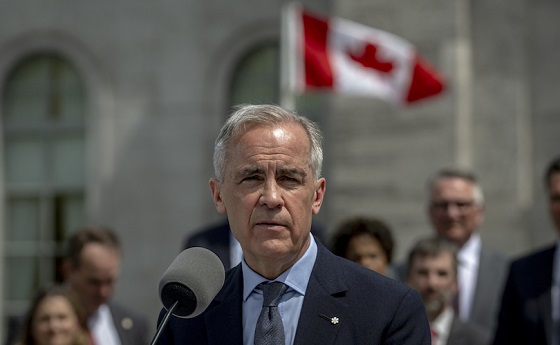
 Business2 days ago
Business2 days agoCanada’s economic performance cratered after Ottawa pivoted to the ‘green’ economy
-
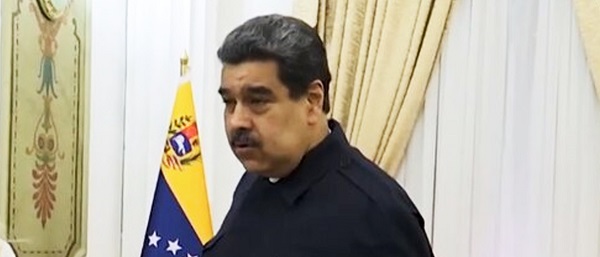
 International1 day ago
International1 day agoUS Reportedly Weighing Military Strikes On Narco Targets Inside Venezuela
-

 International1 day ago
International1 day agoSagrada Familia Basilica in Barcelona is now tallest church in the world
-

 Alberta1 day ago
Alberta1 day agoGondek’s exit as mayor marks a turning point for Calgary
-
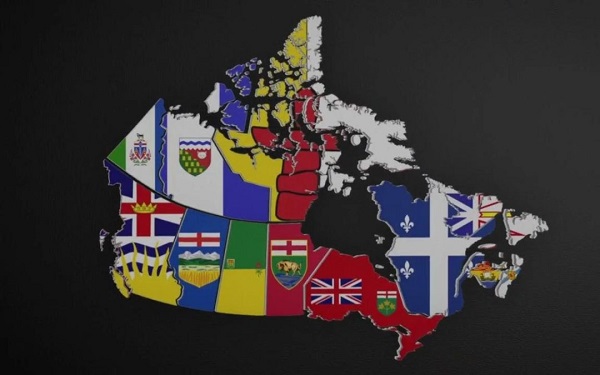
 Fraser Institute1 day ago
Fraser Institute1 day agoOttawa continues to infringe in areas of provincial jurisdiction






